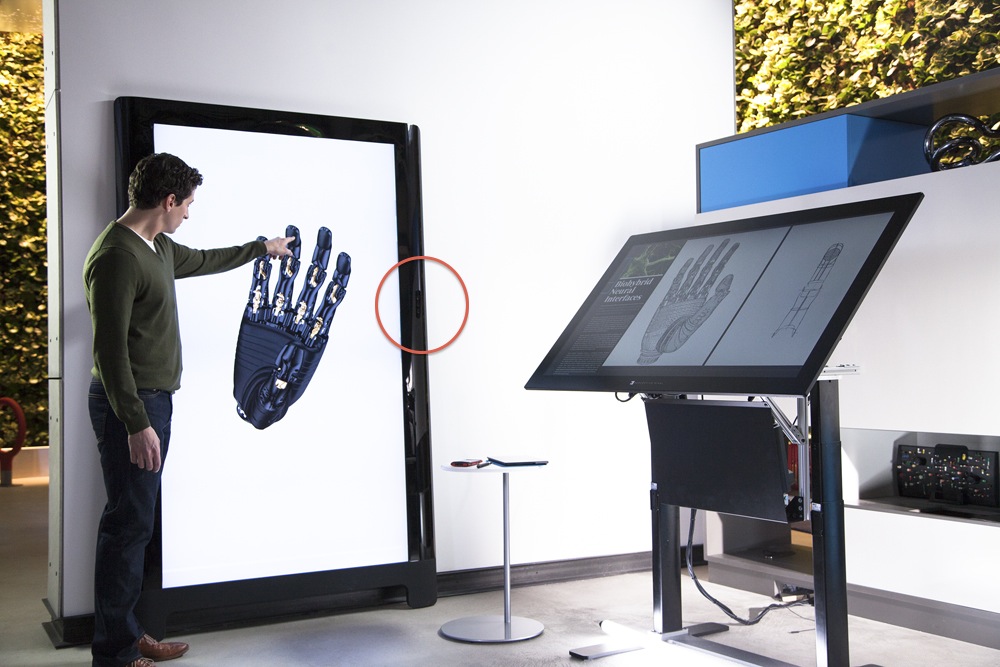
Was that the next generation of Kinect in the bezel of the standup screen at Microsoft’s Envisioning Center? Trying to get a good sense for the size of the thing, I pressed my thumb against the small sensor array … and it literally popped out the back. Yikes. I scrambled to put it back — imagining the untold millions in R&D that went into the device — before realizing that it was apparently a non-working mockup, put there as a placeholder in the newly remodeled prototyping center. Crisis averted.

But it could soon be replaced by the real thing. And there were already plenty of working examples of Kinect throughout the facility — including one that was embedded in the frame of a 4K television set in the facility’s living room, pictured above.
“We’ve basically taken the guts of Kinect and flush-mounted it in the bezel of this thing,” explained Microsoft’s Craig Mundie, pointing to the television screen.
These two ideas represent a big part of Microsoft’s vision of the future. The company envisions every surface becoming a potential display, thanks to new screen technologies and projection systems. This is one of the reasons that Microsoft acquired large-screen technology company Perceptive Pixel last year.
In addition, Microsoft sees embedded sensors becoming a common part of displays and PCs, giving people new ways of interacting with their computers, using gestures and voice commands as they can today with the standalone Kinect devices for Xbox 360 and Windows.
Mundie explained the vision: “You’ll want this kind of hearing and seeing capability to be an integral part of all of these display surfaces. Another goal we have in research is to say, how much can we miniaturize that thing (the Kinect). As it becomes smaller and smaller, it becomes more practical to assume that those are embedded in the bezel of things you buy, or added at low cost.”
Holding up his Surface tablet, Mundie said, “My dream is to get Kinect embedded into the bezel of something like this. Today, Kinect is half as big as this thing. But the physics, at least theoretically, might allow that to be done. So we’ll keep driving that.”
But is it really just theoretical? Thinking back to reports that Microsoft was already working with notebook makers to embed sensors, I asked Mundie if Microsoft and its partners were actually closer to that reality than he was letting on.
“I don’t know, we’ll see,” he said. “It’s not going to happen tomorrow.” However, he aded, “We can see a path to doing that type of thing.”
By the way, if it signifies anything, the apparent mockup in the frame of the standup display (see this enlarged Microsoft picture) was a little over 5 inches tall and slightly wider than my thumb … at least until I knocked it out of the frame.



